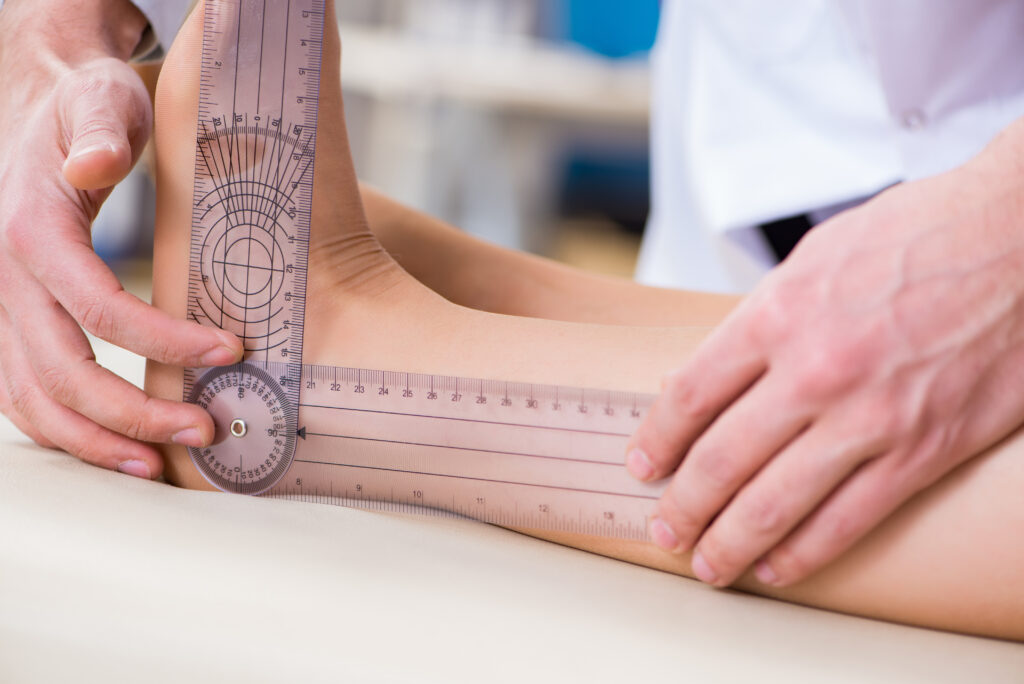Research reviewed: Chronic effect of different types of stretching on ankle dorsiflexion range of motion: Systematic review and meta-analysis. The Foot, 34, 28–35. Medeiros et al
Optimal ankle dorsiflexion (the ankle bending forward) range of motion is important for every day activity and athletic performance – deficits have been linked to key changes in movements (walking gait, running gait, jumping – to name a few) and to injuries including knee injuries, plantar fasciitis, and achilles tendinitis.
A common way that’s used to improve ankle dorsiflexion is by stretching out the calf muscles which are intricately linked with the ankle and have to lengthen during ankle dorsiflexion.
However, the question becomes – does calf stretching actually improve ankle dorsiflexion range of motion and if so, do certain techniques work better?
Enjoying the post? Sign-up for instant inbox access
Just enter your email below to get the latest blog updates delivered straight to your inbox. Every post is researched and written by Dr. Rajpal Brar, DPT.
By submitting this form, you are consenting to receive marketing emails from: . You can revoke your consent to receive emails at any time by using the SafeUnsubscribe® link, found at the bottom of every email. Emails are serviced by Constant Contact
To answer that question, the researchers in this paper looked at the results from 20 different studies that were chosen due to specific criteria that made them more reliable than others. The three different techniques examined were static stretching (holding a calf stretch), proprioceptive neuromuscular facilitation (a manual technique in which the therapist facilitates calf stretching through specific methods), and ballistic stretching (active, higher energy, short-burst stretches).
The researchers found that each of the techniques resulted in improvements in ankle dorsiflexion but there were significant differences in effectiveness. The static stretching showed the highest improvement (an average of 5.24 degrees), second was proprioceptive neuromuscular facilitation (4.32 degrees) and bringing up the rear was ballistic stretching (3.53 degrees).
Additionally, the static stretching group was further divided into the volume of stretching time performed (<3000s or 50 minutes, >3000s and <5000s or between 50 and 83.3 minutes, and >5000s or 83.3 minutes). The ankle dorsiflexion improvements were, respectively: 5.41 degrees, 4.99 degrees, 5.31 degrees. The longer the stretching volume wasn’t associated with more range of motion, it was in fact the opposite! That gives key insight into being effective & efficient with your training.
The final thing to note here is that although ballistic stretching showed the least change of range of motion, it’s the only technique of the three that has also been linked to improvements in performance prior to the activity. Therefore, if you’re working ankle dorsiflexion range of motion in your warm-up then ballistic stretches are more appropriate whereas if you’re working on that range of motion more singularly as part of training then static stretches are your best bet!
Thank you for reading and thank you for your time. If you enjoy the work and want to support, considering donating to the Patreon. If you need our help with injuries, return to sport/activity, performance and/or mindset (we offer virtual & in-person avenues, including online programs) head over to the website.
Dr. Rajpal Brar, DPT, (@3cbperformance) is a physiotherapist, movement expert, strength and conditioning/fitness coach, sports scientist and mindfulness coach. He runs the LA and online based physiotherapy and athletic performance clinic 3CB Performance and you can subscribe to his Youtube channel (which posts a variety of sports injury, performance, and fitness related content).
